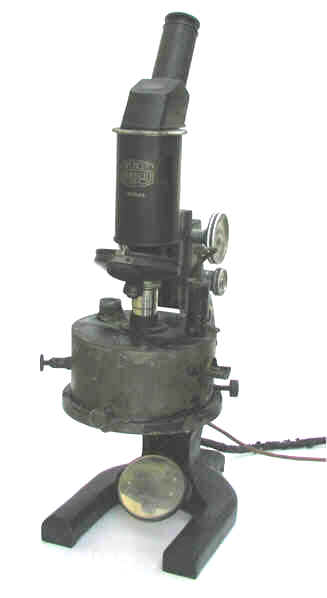Victor Hess's Lindemann Electrometer (ca. 1940)

This electrometer was used by Victor Hess during the period 1944 to 1965 to measure radon concentrations in the breath of radium dial workers.
The cylindrical brass (painted black) Lindemann electrometer is mounted on the microscope stage so that the electrometer fiber can be viewed through the lens. A scale inserted in the microscope eyepiece permitted a quantitative measurement of the fiber's deflection during a 15 minute observation period.
While best known as the discoverer of cosmic rays (in 1911), work for which he received the Nobel Prize, most of his research involved the measurement, effects, and medical applications of radium. His publications included studies on the biological effects of cosmic rays, the influence of the seasons and magnetic disturbances on cosmic rays, the radioactivity of minerals, atmospheric ionization, radium poisoning, and the measurement of radium in humans.
Hess taught or conducted research at many institutions including the University of Vienna, the Institute for Radium Research, the Vienna Veterinary University, the University of Graz, the U.S. Radium Corporation, the University of Innsbruck and Fordham University.
